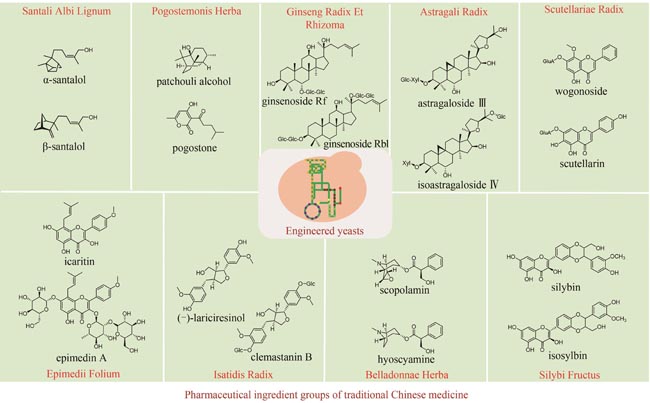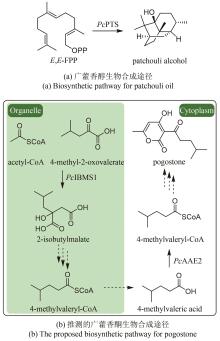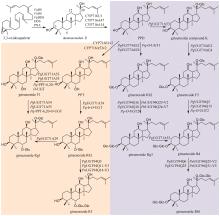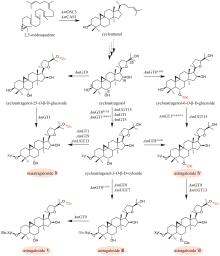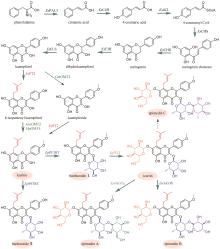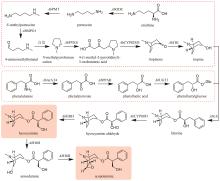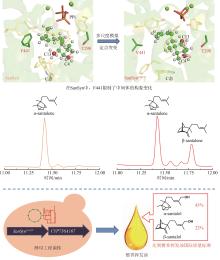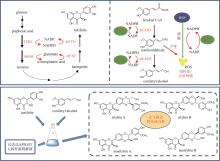|
||
|
Advances in synthetic biology for producing potent pharmaceutical ingredients of traditional Chinese medicine
Synthetic Biology Journal
2024, 5 (3):
631-657.
DOI: 10.12211/2096-8280.2023-082
Traditional Chinese medicine (TCM) is a treasure of Chinese civilization and also a good mine for drug development in China. Many TCM components come from rare biological species including plants, animals, and insects, making the preparation of these TCM pharmaceutical substances at large scales a bottleneck that substantially impedes TCM-based drug development. However, the rapid development of synthetic biology has provided a strategy for addressing this challenge. At present, significant progress has been made in the bio-production of individual TCM components, but the efficacy of TCM is mainly due to the synergistic effect of those ingredients, which are termed as pharmaceutical ingredient groups. Reports on constructing the bio-production platform of pharmaceutical ingredient groups are limited. Herein, we summarize research progress in the biogenic mechanism of important TCM pharmaceutical ingredient groups, such as volatile oils, saponins, flavonoids, lignans and alkaloids. Some individual components of pharmaceutical ingredient groups (e.g. ginsenosides) are synthesized by multiple branching pathways, which can be produced and formatted thereafter. On the other hand, some pharmaceutical ingredients such as sandalwood oil can be synthesized through single pathways/enzymatic reactions by engineering the key enzymes to optimize their ratio. We comment the strategy of combining enzyme engineering and metabolic engineering to optimize both the production of pharmaceutical ingredient groups and their ratio. At the end, we outline the prospect of synthetic biology research for producing pharmaceutical ingredient groups, including: (1) complete clarification of the biogenic mechanism of more complex pharmaceutical ingredient groups, (2) development of novel metabolic engineering approaches for breaking through homogenization of methodology, and (3) optimization of the catalytic characteristics of key synthetic enzymes by combining rational design and directed evolution.
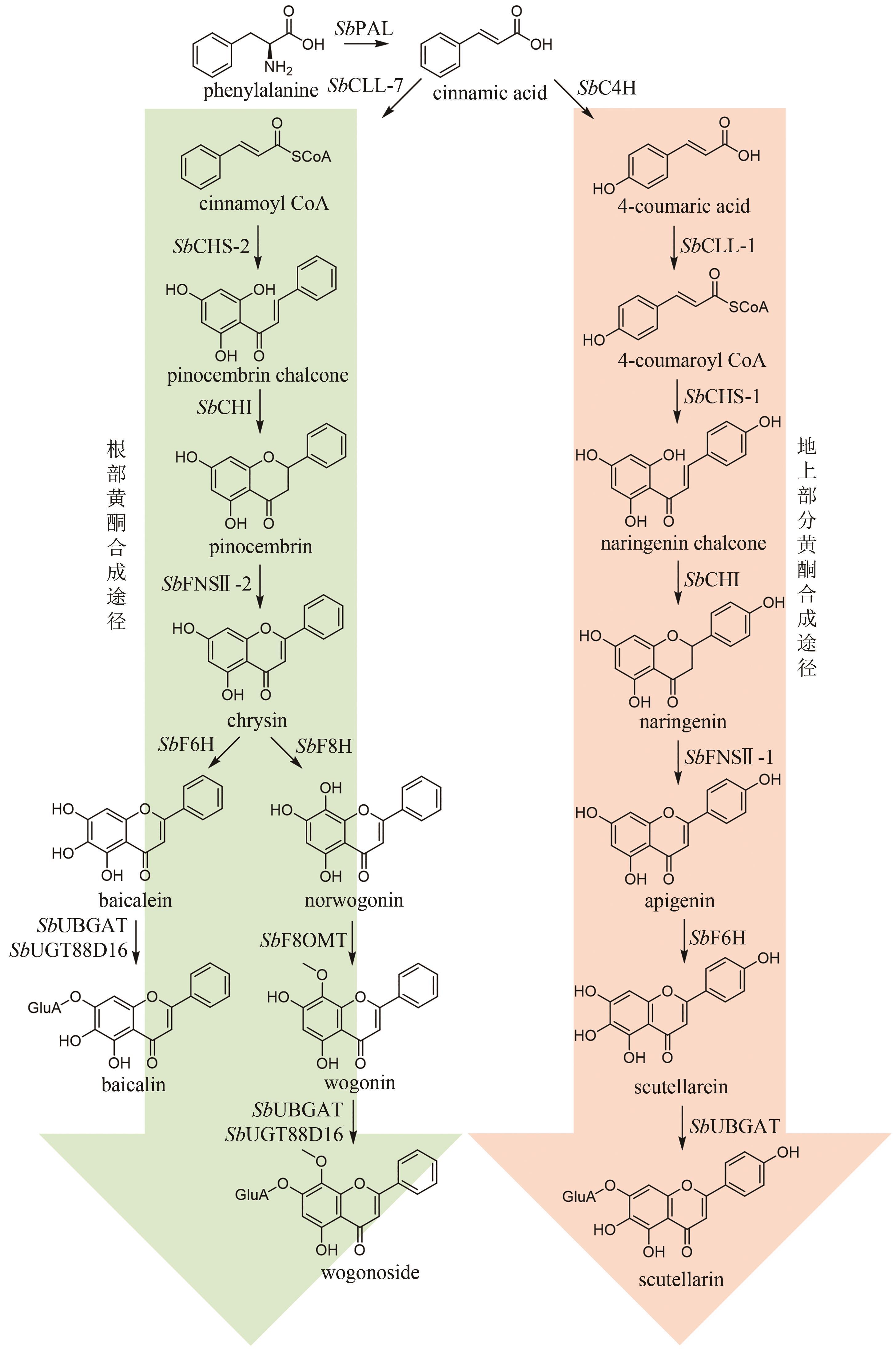
Fig. 6
Biosynthetic pathway for flavonoids in S. baicalensis
Extracts from the Article
黄芩是临床常用中药,以唇形科植物黄芩(Scutellaria baicalensis Georgi)的干燥根入药,具有清热燥湿、泻火解毒、止血以及安胎等功效[83]。现代药理研究表明,黄芩具有抗菌、抗流感病毒、抗炎以及镇静解热等作用[84]。黄酮类成分被认为是黄芩的主要药效成分,其中包含一类黄芩属植物特有的4′-脱氧黄酮化合物。这类黄酮化合物的代表分子包括黄芩苷(baicalin)、黄芩素(baicalein)、汉黄芩苷(wogonoside)、汉黄芩素(wogonin)以及去甲汉黄芩素(norwogonin)等[85]。黄芩采用两种不同的途径合成黄酮类成分,包括地上部分的典型黄酮生物合成途径以及根部的4′-脱氧黄酮生物合成途径(图6)[86]。首先,苯丙氨酸在苯丙氨酸解氨酶(PAL)的催化下被转化为肉桂酸。目前,从黄芩中表征了SbPAL1、SbPAL2和SbPAL3三个PAL,分别在茎、叶和根中表达水平最高,说明在不同组织中黄芩采用不同的PAL酶完成肉桂酸的合成[87]。在地上部分的典型途径中,肉桂酸在肉桂酸-4羟化酶(SbC4H)、4-香豆酰辅酶A连接酶(SbCLL-1)、查尔酮合成酶(SbCHS-1)、查尔酮异构酶(SbCHI)和黄酮合酶(SbFNSⅡ-1)的顺序催化下,依次经4-香豆酸(4-coumaric acid)、4-香豆酰辅酶A(4-coumaroyl CoA)、柚皮素查尔酮(naringenin chalcone)和柚皮素(naringenin),生成芹菜素(apigenin);之后,芹菜素被进一步羟基化和糖基化形成野黄芩素(scutellarein)和野黄芩苷(scutellarin)等化合物(图6)[88-89]。在根中,肉桂酸不被氧化成4-香豆酸,而是在肉桂酰辅酶A连接酶(SbCLL-7)的催化下,直接与辅酶A连接生成肉桂酰辅酶A(cinnamoyl CoA);肉桂酰辅酶A在乔松素查尔酮合成酶(SbCHS-2)和SbCHI的连续催化下,生成4′-脱氧二氢黄酮乔松素(pinocembrin);乔松素在SbFNSⅡ-2的催化下,转化为4′-脱氧黄酮白杨素(chrysin);白杨素的C6和C8分别在黄酮6-羟化酶(SbF6H)和黄酮8-羟化酶(SbF8H)的作用下被羟基化,生成黄芩素和去甲汉黄芩素[85,89];黄酮8-O-甲基转移酶(SbF8OMT)在去甲汉黄芩素的C8位羟基引入甲基,生成汉黄芩素[90];葡萄糖醛酸转移酶SbUGT88D16/SbUBGAT催化黄芩素和汉黄芩素的7位O-葡萄糖醛酸化反应,分别生成黄芩苷和汉黄芩苷[91-92](图6)。黄芩中黄酮类成分的生物合成是植物代谢产物生物合成空间差异分布的典型范例。
Other Images/Table from this Article
|
